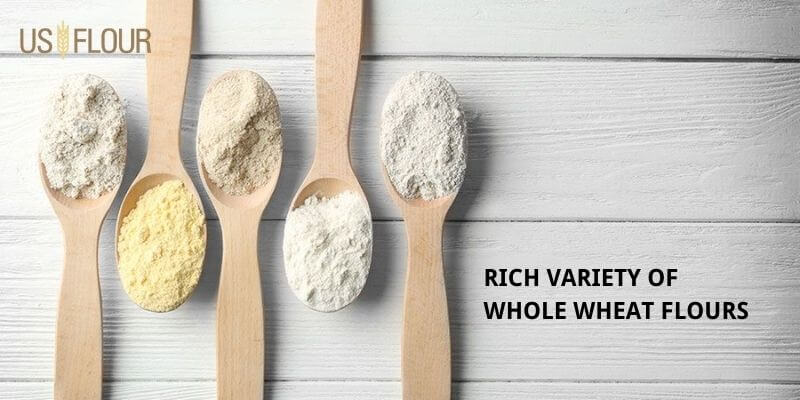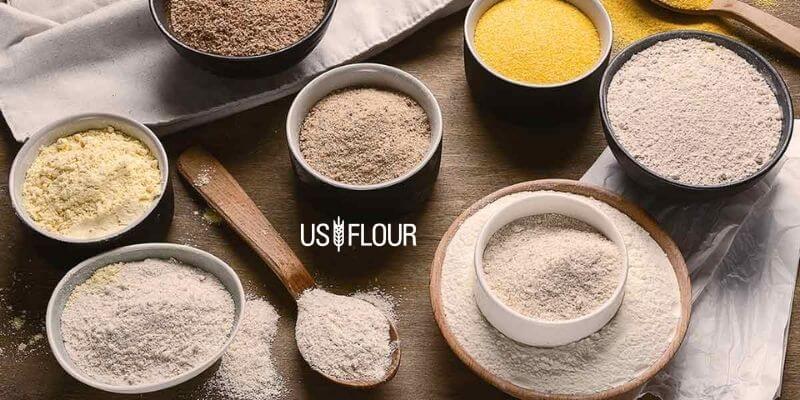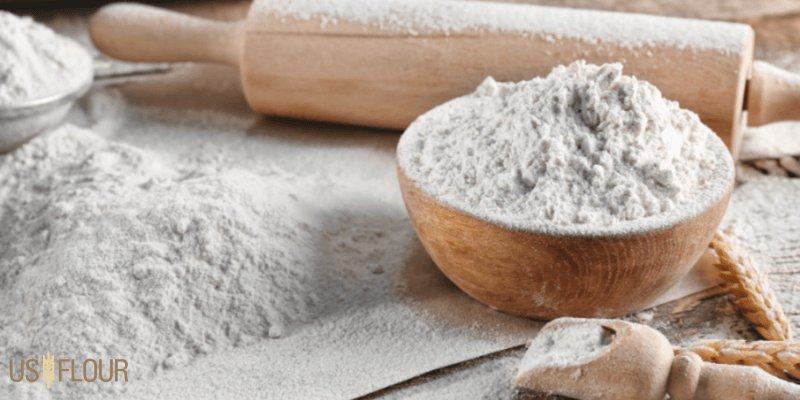Exploring the rich variety of whole wheat flours

Flour is the most important ingredient when it comes to home baking. It has been used for centuries and has many different types. Generally, there are different types or classes of grain, and everyone is specifically used to make the best baked goods.
What is whole wheat flour?
Whole wheat flour comprises wheat endosperm, bran, and germ. As a result, the product has a heavy texture and a compact baked form. Its color is darker, and it is stronger than refined flour. It is a general-purpose flour used to make many baked products.
The wheat bran contains oil that tends to go rancid, resulting in whole wheat flour having a shorter shelf life when compared with all-purpose flour. Rather than grinding whole wheat berries, most commercial whole wheat flours are produced by mixing the bran and germ with refined white flour.
Types of whole wheat flour

Depending on the type of baked goods you want, there are different types of whole wheat flour. Each of these flours is unique, having peculiar benefits and characteristics. The various types of whole wheat flour are listed below.
1. Sprouted whole wheat flour
Red wheat kernels are allowed to germinate until they are just starting to sprout, at which point they are milled to produce sprouted whole wheat flour. Making this flour this way brings out all the goodness in it. Some of the phytate and starch is broken down by sprouting to make the flour. It also makes the baked products more digestible and milder in flavor.
Sprouting grains increases enzyme activity and the flour’s vitamin and protein content significantly. Additionally, the starches in sprouted wheat are converted to sugars, which helps those who typically have trouble digesting wheat products or gluten. Since sprouted grain is used to make this flour, wheat flour has numerous nutritional benefits.
2. White whole wheat flour
White wheat is a type of hard white wheat. Its wheat kernels have a milder flavor and lighter color than red wheat. Rather than using traditional red wheat, white whole wheat flour is milled from albino or white wheat. It does not lose its nutrients as much as bleached white flour.
White whole wheat tastes similar to bleached flour, so it is often considered a good compromise between nutrition and taste. This flour is used to make many packaged loaves found in the supermarket. You can also use the flour as a substitute in a recipe that calls for bleached flour. This means that whole wheat flour can make gravies, pie shells, puddings, cakes, and loaves of bread.
Also, it is beneficial that the essential nutrients in white whole wheat flour are present in the daily diets of people who need them.
3. Whole wheat pastry flour

One more variety of whole wheat flour is wheat pastry flour, made from soft white wheat kernels. Since soft wheat kernels have less protein than hard wheat kernels, milling their results in lighter-coloured, better-tasting flour.
Due to its low protein content, this whole wheat flour is best used for whole grain baked products like pancakes, biscuits, cookies, cakes, and pie crusts. This flour is a great option for home kitchens because it produces baked goods with a tender texture while being extremely nutrient-dense because of the wheat bran and germ.
Whole wheat pastry flour, just like every other whole wheat flour, has a shorter shelf life. This is also due to the bran’s oil content. It must be stored in a cool, dry place to prevent it from going rancid quickly.
4. Spelt flour
All of the spelled grain is processed to make spelled flour. This includes the germ, endosperm, and bran. The endosperm is the only starchy part of the grain and is used to make the white version of this flour.
In addition to the distinct nutty flavor, you will find that it has a slightly tangy taste. It has a coarse texture and noticeable brown flecks mixed with white flour. Its density and texture are comparable to those of wheat flour.
Due to its relatively high protein content, spelt flour in whole wheat is similar to whole-grain bread flour, making it ideally suited for making hearty bread, muffins, and other baked goods. It can also be used to make pasta.
Spelt flour, like regular bread flour, is available in white. The gluten networks that both varieties of spelt flour can create will give your baked goods more volume and structure. However, this gluten network may dissolve quickly if the dough is overmixed.
5. Kamut flour
It is guaranteed that Kamut Khorasan wheat (an ancient grain) has never been hybridized or genetically modified in any way. It is always produced using organic methods and is renowned for being nutrient-rich, simple to digest, and have a firm texture and sweet, nutty flavor.
Kamut grain has numerous health benefits, including being a good source of fiber and protein. It also contains other minerals and vitamins. Zinc, phosphorus, magnesium, vitamin B1 (thiamin), and niacin are abundant in them.
Furthermore, minerals like molybdenum, manganese, and copper are present. Kamut Khorasan wheat contains a high concentration of carotenoids. Carotenoids are another powerful antioxidant family and are likely responsible for the golden color characteristic of wheat flour and grains.
Conclusion
The presence of vitamins in whole wheat flour gives it a nutritional edge over white flour. Magnesium, zinc, fiber, and proteins are abundant in whole wheat flour. The vitamin B content is also high. These nutritional benefits can also be found in the various types of whole wheat flour mentioned.
 Power to The Bakers.
Power to The Bakers.